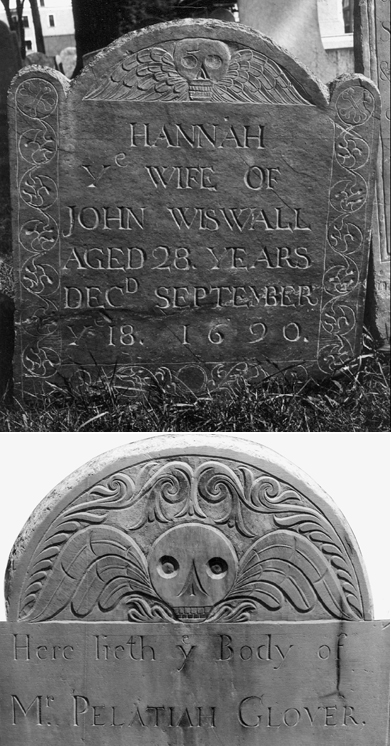Dorchester Illustration 2669

Gravestones, Dorchester Old North Burying Ground
Dorchester Illustration 2669
The image at the top of today’s illustration is a photograph of a grave marker in the Dorchester Old North Burying Ground. The design is of a skull with wings carved by James Foster II. Three generations of stone carvers, named James Foster, worked in Dorchester. The elder James Foster is credited with a number of the oldest tombstones in many Boston-area burial grounds. James Foster II lived from 1698 to 1763. The third James Foster was born in 1732 and died in 1771. Although their work is sometimes indistinguishable, James II dared to inaugurate a radical change in the well-established death symbol by placing eyeballs in the empty sockets (bottom image).
In the 18th century, before the Revolution, gravestone carvings were based on a “metamorphic aesthetic.” This concept attempted to depict the physical change from life to death. The image used most commonly in the 17th century was the skull, a medieval symbol of death. When wings were added to the design in the late 17th and 18th centuries, the design became a symbol of physical death and spiritual resurrection.
“The winged skull symbol pertains to life and death, and suggests the briefness of life and the power of death. The death’s head depicts the soul’s voyage through death.
“These symbols are an abstract form of death, and represent either Puritan angels and resurrection, or the ultimate triumph of death. Inscriptions were brief and informative, without mention of one’s character or position in life. Interestingly, flowers were sometimes carved on the edges of stones. This may have been a way for the Puritans to represent life, even if it was surrounded by images of death.” https://sites.google.com/a/windsorct.org/revolutionary_windsor/home/gravestones-puritanism
